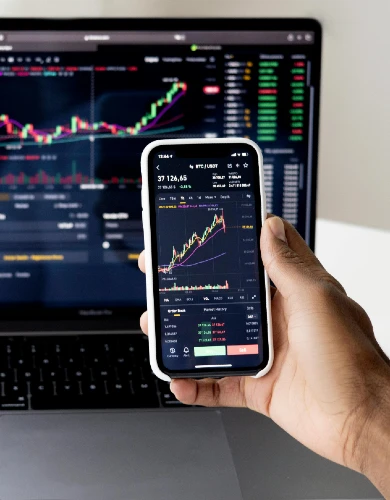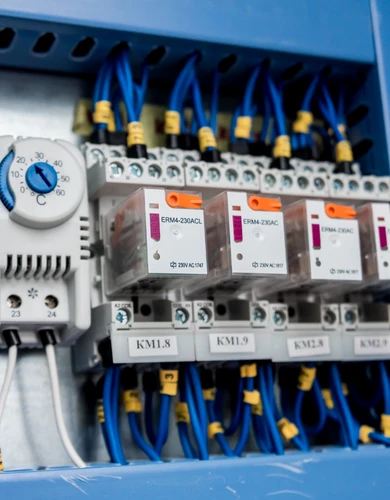Business Electricity Meter Installation
All commercial properties in Britain with a power supply have a business electricity meter to record electricity consumption. Electricity meter readings are used by suppliers to calculate the charges on a business electricity bill.
This guide explains the process of installing or upgrading a business electricity meter.
💡 We assume that your commercial property is already connected to the electricity grid. If you are arranging a new power supply, your electricity meter installation will be included as part of the business electricity connection service.
Do you need a business electricity meter installation?
There are a few scenarios where a business electricity meter installation is required. Here are the most common:
- Refitting your property.
- Relocating the meter in your property.
- Upgrading to a smart business energy meter.
- Upgrading to a half-hourly meter due to increased electricity usage.
How to arrange a business electricity meter installation
Safety is paramount when installing an electricity meter. We recommend engaging a certified utility consultancy that can manage each stage of the business electricity meter installation process.
To arrange a business electricity meter installation, here’s the information you will need:
- Site address
- Company registration information
- MPAN number
- Your chosen type of business electricity meter (See our list below)
- Authorised supply capacity (in kVA) (from your distribution network operator)
- Your meter operator (if you have a half-hourly meter)
- Annual electricity usage in kWh
The process of installing your business electricity meter
Here, we’ll outline the process of installing an electricity meter at a small commercial property:
- Site survey and assessment: An initial assessment of the business premises and power supply to verify the appropriate meter type and location.
- Installation: A certified technician will install the meter, which includes connecting it to the main electrical supply.
- Communication setup: Configuring the meter’s communication module and verifying that it is transmitting meter readings successfully.
- Testing and calibration: The technician will test the meter to ensure it is working correctly and accurately recording business energy consumption.
- Activation and final checks: The meter is activated, and the power supply is restored. The meter starts recording power usage.
The entire process usually takes less than two hours; however, it will involve a power cut for approximately 30 minutes.
How much does a business electricity meter installation cost?
The cost of a business electricity meter installation depends on the type of meter you choose and the complexity of your installation. For instance, three-phase power supply meters are more complex than single-phase.
We recommend obtaining an accurate quote from an electricity supply specialist before installing.
💡 Some business energy suppliers are offering free smart business electricity meter upgrades as part of the national smart meter rollout. Find a supplier offering a meter installation for free using our business electricity comparison service.
Types of business electricity meters
Here’s a breakdown of the different types of electricity meters used in British commercial properties.
The type of business electricity meter you currently have is defined by the first two digits on your MPAN, known as the profile class.
💡Your type of electricity meter determines the business electricity standing charges that non-domestic properties pay in their business electricity rates.
Single-rate electricity meter
MPAN Profile Class: 03
Single-rate meters are the most common electricity meters used by businesses. A single-rate meter takes a single measurement of electricity consumption, regardless of the time of day.
If you have a single-rate electricity meter, you cannot take advantage of off-peak business electricity tariffs.
Multi-rate electricity meter
MPAN Profile Class: 04
Multi-rate electricity meters take two or three separate measurements of electricity consumption at different times of the day.
Multi-rate business electricity meters let you take advantage of cheaper electricity at night while paying higher rates per kWh at peak times.
Here are the types of multi-rate business electricity meters:
- Economy 7: Offers lower rates during a 7-hour period classed as “off-peak”.
- Economy 10: Offers lower rates during a 10-hour period classed as “off-peak”.
- Evening and Weekend: Offers lower rates through the evening and on weekends. What’s defined as evenings is decided by each supplier.
- Three-rate: A meter with daytime, evening, and night measurements.
Half-hourly meters
MPAN Profile Class: 00, 05-08
Half-hourly meters (HH) take readings every 30 minutes and then transmit these readings directly to your supplier. Businesses that have a maximum demand exceeding 100kW in any 30-minute period must have a half-hourly meter installed.
AMR business electricity meters
AMR stands for “automated meter reading.” These meters are used by large businesses that don’t meet the electricity demand required for half-hourly meters. They can record half-hourly meter readings if needed.
A business that uses an AMR meter will pay a provider for the service; these charges cover the cost of the meter and the transmission network. Business energy suppliers sometimes pass the AMR charges directly onto your electricity bill.
Smart business electricity meters
Smart meters are the latest generation of small business energy meters. They transmit real-time electricity consumption data to your supplier and business energy monitor.
Smart meters are being rolled out to businesses with profile class 03 or 04, replacing older analogue meters.
Most businesses can request a free smart business electricity and business gas meter installation from their supplier.
Business electricity meter installation FAQs
Our business energy experts answer frequently asked questions regarding business electricity meters and their installations.
What do you do when your business electricity meter is broken?
The business electricity meters used in Britain are very reliable and operate for decades without the need for maintenance.
If you believe there is a problem with your meter, we recommend contacting the customer services department of your business electricity supplier.
How does a business electricity meter work?
A business electricity meter uses electrical circuitry to continuously measure the voltage and current of the power supply passing through the meter.
The power consumption measured in kWh shown on the front of the meter is the product of the voltage (in kilovolts) and the current (in amps).

